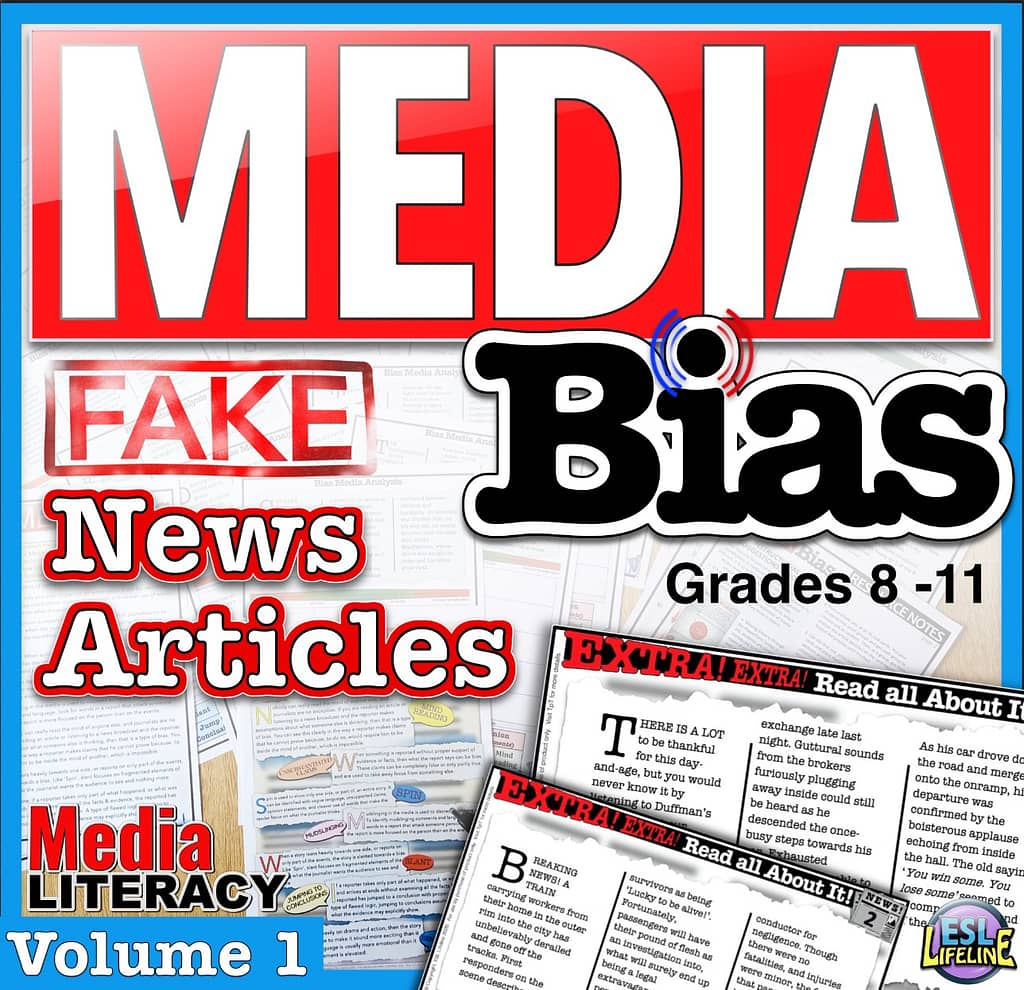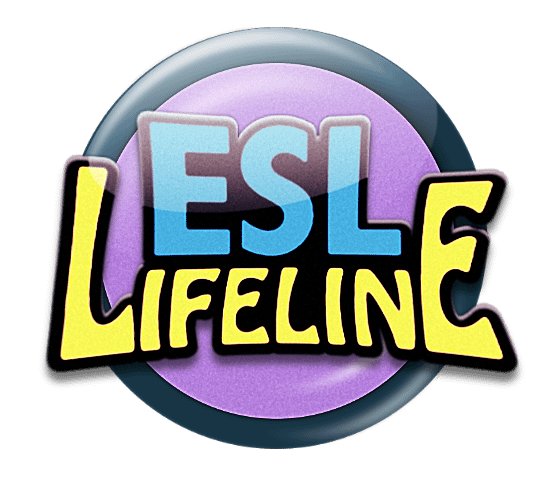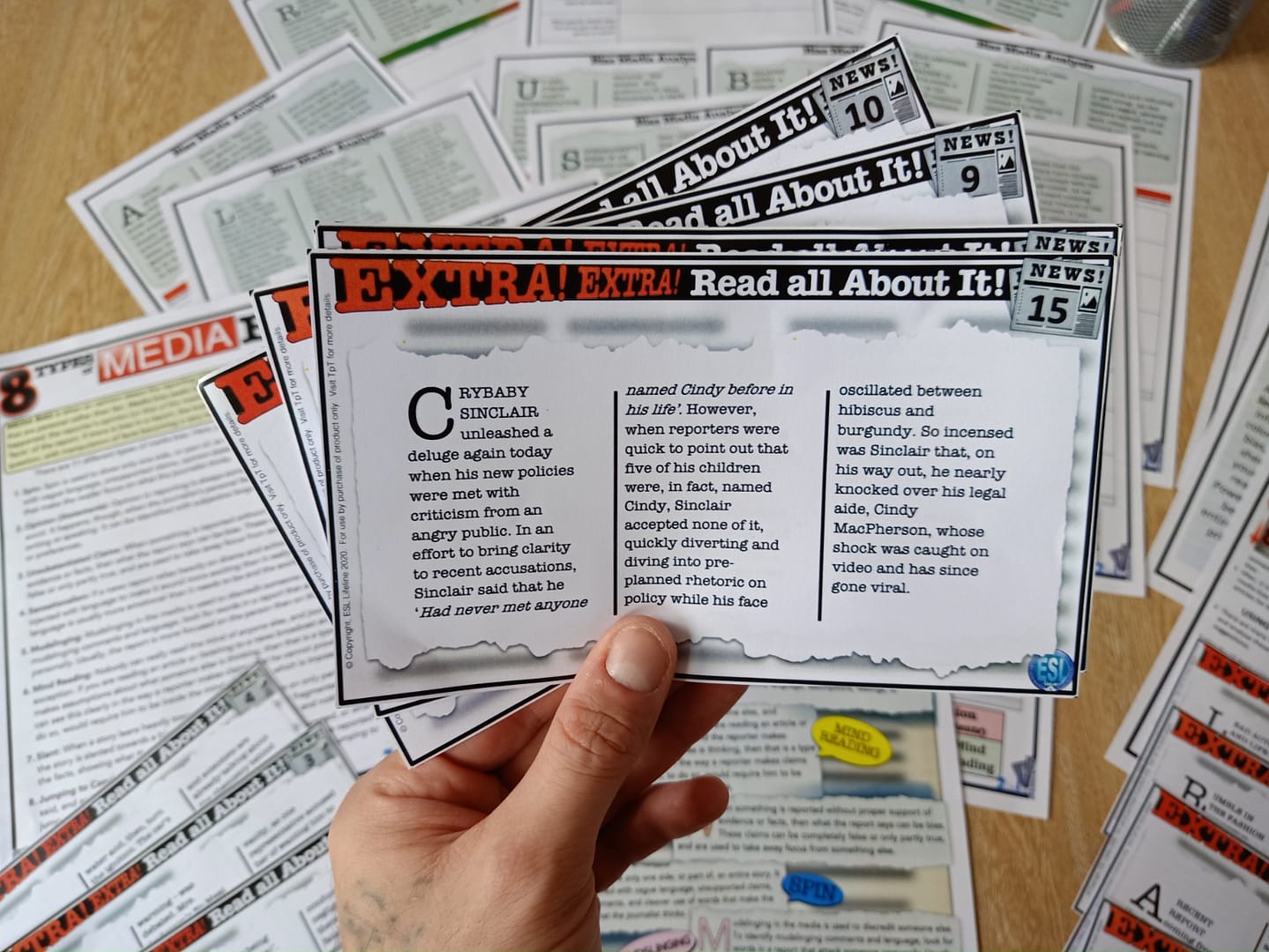In today’s world, it’s important to learn how to identify biases in the media. To help your students develop this skill, you can use these custom-written fake news articles. By practicing with these articles, your learners will improve their ability to detect bias and build critical media literacy skills. Let’s dive into an exciting journey through the complex landscape of media bias!
Learn about Bias with Fake News Articles

If you want your students to understand different biases in the media, these Media Bias Fake News Articles is perfect for you. It includes short news articles written using heavy bias. The articles cover biases such as mudslinging, slant, spin, sensationalism, opinion statements, jumping to conclusions, mind reading, and unsubstantiated claims.
Detecting Bias

Most media literacy units highlight what bias in the media is, but often lack practical exercises in finding it. This media analysis resource address that gap with 15 articles intentionally written with a strong bias. This allows students to understand how reporters use spin and slant to push particular agendas.
Why Media Literacy Skills Matter
Most students today know that it’s hard to find trustworthy news amidst all the fake stories. But figuring out which news is reliable requires time and training. It’s crucial for students to develop media literacy skills before graduating from high school. In a world overflowing with information and an abundance of “facts” thrown at us every day, being able to distinguish trustworthy information from the rest gives you an edge when you’re on your own.
So, if you want to help your students become better at spotting fake news, be sure to get these Media Bias Fake News Articles.

